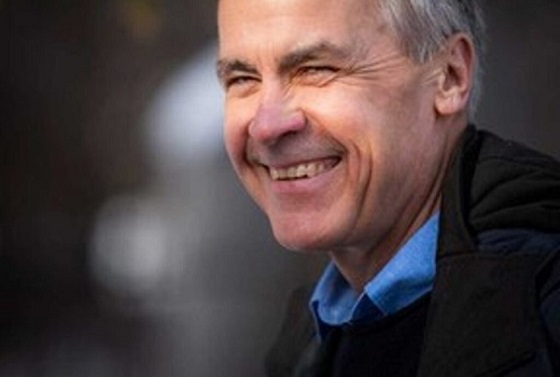Opinion
Is “OF THE PEOPLE, BY THE PEOPLE, FOR THE PEOPLE” coming back?

The next election could be the “Peoples’ Election”.
We should bring back; “Of the people, By the people, For the People”.
You know the ones that don’t demand but get the job done. Working hard to put a roof over their head, pay their taxes, has no advocates, looking for no special treatment, and quietly goes about living their lives.
Politically, we ran off the rails electing politicians who just politic for the sake of politicking. Election after elections they run, sometimes jumping from one arena or seat to another.
Perhaps they started with good intentions but after a few elections they get in a rut, burn out but they are used to the life style, the power, the name recognition and it is easier to win with the name recognition and past campaign experience.
But is it right?
Don’t they lose touch with the lives of non-political citizens? There are many who want things, demand changes and policies from the politicians and they do ingratiate themselves with politicians for their own personal gain.
Former Premier Ralph Klein’s wife put it starkly after Ralph retired. “They stopped calling, they stopped visiting.” I remember another politician saying that when he lost the election, his phone stopped ringing.
Perhaps the lifers, the politicians who run again and again, need this? They need people to just call.
The U.S. President can only be the president for 2 terms, and there is a reason for that. A new president will bring new perspectives, new ideas, and have less baggage. We don’t have term limits, maybe we should?
Perhaps the new politicians will push the boundaries. Instead of subsidizing an area for decades, perhaps let them find their own way to survive. The downtown is one example that comes to mind after decades of throwing money at it, let it downsize, disappear or evolve on it’s own. Sink or swim? I believe it will adapt on its’ own.
Perhaps we could stop investing in building new neighbourhoods and invest in the older neighbourhoods?
Perhaps stop investing in singular events and invest in something the current residents can enjoy everyday?
Politicians have done surveys, created committees and heard from the population but their voices seem muted compared to the voices of the few in the inner circle.
So perhaps we should bring in term limits to give “Regular People” an opportunity to bring new ideas, new energy and a new perspective to politics. A new twist to an old idea.
Every politician thinks they are the best person for the position they hold, but the world will not end if someone new takes the seat.

Perhaps the world may change for the better, and political lifers, could be the road block? Possible?
Perhaps the next election could be the “Peoples’ Election”.
Crime
UK finally admits clear evidence linking Pakistanis and child grooming gangs

Quick Hit:
After years of denial and political cover-ups, the UK government has formally acknowledged a disturbing link between Pakistani-heritage men and child grooming gangs. A scathing new review has prompted Prime Minister Keir Starmer to reverse course and launch a full national inquiry into the widespread abuse.
Key Details:
- The Casey Review found “clear evidence” of Pakistani men’s overrepresentation in grooming gangs and accused authorities of ignoring the abuse to avoid accusations of racism.
- Home Secretary Yvette Cooper confirmed over 800 historic child sex abuse cases will be reopened and prosecuted where possible.
- The Labour Party and Prime Minister Starmer were previously opposed to a national inquiry, with critics calling this reversal a politically motivated “smokescreen.”
Diving Deeper:
The British government has finally acknowledged a link between Pakistani-heritage men and the grooming gang epidemic that has plagued communities across England for decades. The admission comes following the release of a damning public review led by Baroness Louise Casey, which uncovered years of institutional failure, racial sensitivity, and political cowardice.
Home Secretary Yvette Cooper presented the findings in Parliament, confirming that the Casey Review had “identified clear evidence of over-representation among suspects of Asian and Pakistani-heritage men.” She condemned the systematic rape of vulnerable girls—some as young as 10—and the authorities’ “unforgivable” failure to act.
“The sexual exploitation of children by grooming gangs is one of the most horrific crimes,” Cooper said, noting that too many warnings had been ignored over the last 15 years. She announced that the government would adopt all of Baroness Casey’s recommendations and reopen more than 800 historic cases.
Prime Minister Keir Starmer, who previously dismissed calls for a national inquiry as “far-right misinformation,” abruptly changed course over the weekend and agreed to a full inquiry with legal authority to compel testimony. This reversal followed mounting pressure from campaigners like Dame Jasvinder Sanghera, Elon Musk, and Reform UK’s Nigel Farage.
Labour MP Sarah Champion, once ousted for raising alarms about Pakistani grooming gangs in her Rotherham constituency, welcomed the inquiry. “There’s a real sense justice has not been handed out fairly,” she said, accusing officials of failing victims for fear of “causing offense.”
The Casey review also pointed to illegal immigration as a contributing factor and called for mandatory ethnicity data collection in child exploitation cases. Critics argue that authorities in Labour-run areas turned a blind eye to the abuse—some allegedly in exchange for votes—treating white working-class girls as expendable while shielding perpetrators.
Former detective and grooming whistleblower Maggie Oliver expressed skepticism, warning that unless the inquiry is led by Baroness Casey, it risks becoming another whitewash. “This is about gross criminal neglect at the top of policing, at the top of government, at the top of social services,” Oliver said.
While the inquiry marks a long-overdue step toward accountability, some warn it may be politically perilous for Starmer. As former head of the Crown Prosecution Service, he held a central role when many of these abuses first surfaced. And with many of the cover-ups tied to Labour councils, the fallout could deepen public distrust in the party.
Business
Carney’s Honeymoon Phase Enters a ‘Make-or-Break’ Week

From the National Citizens Coalition
The National Citizens Coalition (NCC) is sounding the alarm on a critical week for the Carney government, which, despite enjoying an unearned honeymoon in the polls, has delivered zero results for everyday Canadians. As the G7 summit looms large and the House of Commons prepares to adjourn, this is a make-or-break moment for Prime Minister Mark Carney to prove his government is more than empty promises. Canadians are watching, and the NCC is calling out the glaring failures that threaten a grim summer of economic decline, and continued crime, chaos, and rising unemployment.
Housing Minister Gregor Robertson Caught in $10.85 Million Scandal
Recent revelations from Blacklock’s Reporter expose Housing Minister Gregor Robertson’s attempt to conceal $10.85 million in personal property investments during Commons questioning. This shocking lack of transparency from the minister tasked with addressing Canada’s housing crisis raises serious questions about his integrity and ability to prioritize Canadians struggling with skyrocketing costs. While Robertson dodges accountability, and Carney apparently scoffs at providing housing relief to millions suffering under a Liberal-made crisis, young professionals and young families are wondering if they’ll ever have a chance to own a home bigger than Canada’s much-maligned supply of ‘dog-crate condos.’
The NCC demands a full ethics investigation, the resignation of Gregor Robertson — who, as one of the architects of the Vancouver housing crisis, should have never been handed this file to begin with — and immediate action to restore trust in this critical portfolio.
Pipeline Delays and Provincial Obstruction Threaten Economic Growth
The Carney government’s inaction on pipelines is stalling Canada’s economic potential. Despite promises of “nation-building projects,” British Columbia and Quebec continue to block and veto critical energy infrastructure, with Carney failing to assert federal leadership. His vague talk of “consensus” and “decarbonized” barrels has led to zero progress, leaving Alberta’s economy in limbo and Canadians facing higher energy costs. With no clear plan to advance projects, the government is squandering opportunities to create jobs and secure energy sovereignty. The NCC urges Carney to act decisively this week to break the provincial logjam and deliver results.
Immigration Chaos: Lena Diab’s Unchecked Honour System Fails Canadians
Immigration Minister Lena Diab’s reliance on an ‘honour system’ for millions of temporary visitors with expiring visas is a recipe for disaster. As Canada grapples with unsustainable immigration levels, Diab’s apparent plan for millions of temporary workers and failed ‘diploma mill’ attendees assumes compliance without enforcement, ignoring the high-propensity for fraud, and the ongoing and urgent strain on housing, healthcare, and public services. The Liberals’ Strong Borders Act promises reform, but its loaded with unnecessary overreach and vague measures.
A lack of urgency leaves Canadians vulnerable to further crime, chaos, closed emergency rooms, high rents, and failing infrastructure. With immigration continuing to spiral out of control, the NCC calls for concrete action to drastically lower immigration targets, expedite deportations, and prioritize Canadian citizens and the record amounts of unemployed before the House adjourns.
Canadians Deserve Results, Not More Hollow “Elbows up” or “Team Canada” Rhetoric
This week’s G7 summit in Alberta and the impending House adjournment are the Carney government’s last chance to show leadership, before an undeserved summer break for a government that will be overseeing deepening economic decline, rising crime under a refusal to tackle catch-and-release bail, and growing unemployment. Canadians cannot afford another season of unfulfilled promises and unchecked crises. The NCC demands Carney use the G7 platform to secure trade stability, meaningful energy deals with our allies, and table a federal budget to address the cost-of-living crisis made worse by inflationary Liberal spending. Failure to act now will cement an early legacy of inaction and leave Canadians to endure a prolonged period of hardship.
“The Carney government’s honeymoon has been built on hype, not results,” says NCC Director Alexander Brown. “From Gregor Robertson’s hidden millions, to stalled pipelines, to an immigration system in continued disarray, Canadians — and particularly young Canadians — are being let down. This week is Carney’s chance to prove he can deliver beyond the lies that were told to placate a portion of the electorate at the polls. If he fails to act, the economic decline, the crime and chaos, will only worsen, and everyday Canadians will pay the price.
“True Canadian leaders like Alberta Premier Danielle Smith are in attendance at the G7 along with Carney. If actual acts of ‘nation-building,’ and not more net-zero de-growth, do not come naturally to the PM, he should turn to those who have never wavered in their quest to make life more affordable for the hard-working citizens they are privileged to represent, and who know when to get out of the way to allow Canadians to prosper. More of the same internal, ideological sabotage from the Liberals cannot ruin this dire moment for Canada’s rebirth and recovery.”
The NCC calls on all Canadians to hold the Carney government accountable. Join us in demanding transparency, action, and results before the House adjourns and the G7 summit concludes. Together, we can fight for a stronger, more prosperous Canada.
About the National Citizens Coalition: Founded in 1967, the NCC is a non-profit organization dedicated to advocating for individual freedom, lower taxes, less government waste, and a stronger Canada. We hold governments accountable and fight for the interests of everyday Canadians.
-

 Business2 days ago
Business2 days agoEU investigates major pornographic site over failure to protect children
-

 Canadian Energy Centre2 days ago
Canadian Energy Centre2 days agoCross-Canada economic benefits of the proposed Northern Gateway Pipeline project
-

 Alberta2 days ago
Alberta2 days agoAlbertans need clarity on prime minister’s incoherent energy policy
-

 Economy2 days ago
Economy2 days agoCarney’s Promise of Expediting Resource Projects Feels Like a Modern Version of the Wicked Stepmother from Disney’s Cinderella
-

 conflict18 hours ago
conflict18 hours ago“Evacuate”: Netanyahu Warns Tehran as Israel Expands Strikes on Iran’s Military Command
-

 Energy17 hours ago
Energy17 hours agoCould the G7 Summit in Alberta be a historic moment for Canadian energy?
-

 Alberta1 day ago
Alberta1 day agoAlberta’s grand bargain with Canada includes a new pipeline to Prince Rupert
-

 Health21 hours ago
Health21 hours agoLast day and last chance to win this dream home! Support the 2025 Red Deer Hospital Lottery before midnight!






